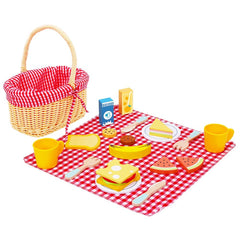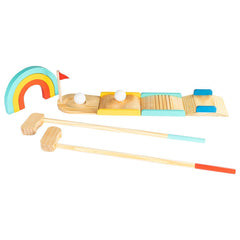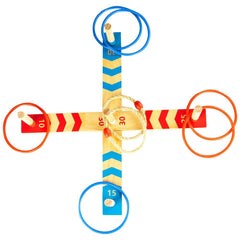Numbers and counting are part of a child’s everyday world. Whether they’re showing their age with fingers or stacking blocks, children use numbers naturally all the time. Parents don’t need formal lessons to help with this. Instead, simple daily moments can easily become opportunities for learning when we pay attention to them in a new way.
At Barnshenn, we believe that early learning should happen naturally and comfortably. By including learning toys in everyday routines, children can explore numbers and counting without pressure. Whether it’s at breakfast, during a walk to the park, or while getting ready for bed, development toys combined with encouraging words help children build a strong foundation in maths from day to day.
Why Numbers Matter Daily
Learning toys aren’t just about keeping children busy. They’re tools that help children understand the world. Numbers and counting show up everywhere: how many socks are in a drawer, how many apples are in the basket, or how many steps lead to the garden.
When parents bring in numbers in everyday life, children begin to notice them too. This awareness forms the base for stronger maths skills later on. Simple routines become full of learning when you add just a little counting and sorting.
Development toys from Barnshenn support these moments by encouraging interaction, curiosity, and pattern-building. Take advantage of our wooden toys by giving them to your toddler. Furthermore, please provide them with a simple prompt. The prompt will help your toddler learn concepts like more and less, before and after, or one and many.
Count at Mealtimes
Meals are perfect for learning. They happen regularly and involve objects to count — spoons, slices of fruit, or pieces of toast.
Ask simple questions like:
“Can you count the grapes on your plate?”
“Do we have two forks on the table?”
Children can also sort their snacks—three beans and four carrot sticks—and compare quantities. This builds vocabulary while gently introducing maths ideas.
You can use wooden toys like counting boards or number trays at the table. For example, match one apple slice with the number “1” or two crackers with the number “2”. These moments feel natural, and learning happens without pressure.
Spot Numbers on the Go
Walks, grocery trips, and car rides are full of opportunities to include numbers. Count how many steps it takes to reach the door. Spot house numbers or car plates. Notice shapes and patterns on buildings or signs.
“Let’s count the trees on our street,” or “Can you see the number three on that door?” These prompts don’t take time or planning — they simply make use of what’s already around.
Barnshenn recommends light and sturdy wooden toys for travel, like mini counting boards or number rings. These toys make waiting times easier and offer extra chances to build understanding through touch and sight.
Build Skills Through Play
Quiet play at home is one of the most powerful ways children learn. Toddlers can explore math concepts independently with development toys such as bead frames, stacking blocks, number puzzles, and matching sets.
Sorting blocks by size, wooden stacking toys by number, or counting beads as they slide are all strong learning actions. The key is repetition. As children play, they begin to see patterns — one block, two blocks, then three. These patterns help them predict, compare, and understand order.
Use Bedtime to Reflect
Even the end of the day can support number learning. You can make it happen by including numbers, counting animals, or simple sequences in your bedtime stories. These toys provide children with a sense of ease and create the right mood for review. So, children are bound to remember more in such an environment.
You can also reflect on the day:
“How many birds did we see today?”
“Can you remember how many puzzle pieces you used?”
This quiet talk helps children recall, connect, and build memory. It also enables parents to observe their child's learning progress and identify areas requiring support. A simple wooden puzzle on the bedside table can become part of a nighttime routine — one piece at a time.
Final Remarks
Numbers and counting are part of daily life. When supported with the right tools, like well-made learning toys, children can explore and understand maths at their pace. What matters most is that counting becomes something they see, hear, and touch often — during meals, walks, play, and bedtime.
Barnshenn makes this process easier by offering a range of wooden toys that fit into your child’s routine. Each toy is designed to support development while keeping learning calm, natural, and meaningful.
When parents use numbers in everyday moments, children start to see patterns, compare things, and learn early maths skills easily. This process is how learning becomes strong and natural.
FAQs
1. What age should I start using counting toys with my child?
Most children show interest in numbers between 18 months and 2 years. Start with sorting and stacking toys and introduce number puzzles as they grow.
2. Are wooden toys suitable for learning numbers?
Yes. Wooden toys are durable and safe, and they help children stay focused. These toys do not distract children with sounds or lights, and they encourage natural interaction among them.
3. Do I need to guide my child during number play?
Not always. Children learn through independent play. But when parents join in now and then, it boosts vocabulary and supports understanding.
4. How do I know which toy to choose?
Pick development toys that suit your child’s stage. Look for toys that involve sorting, stacking, matching, or counting — all key actions for early learning.





